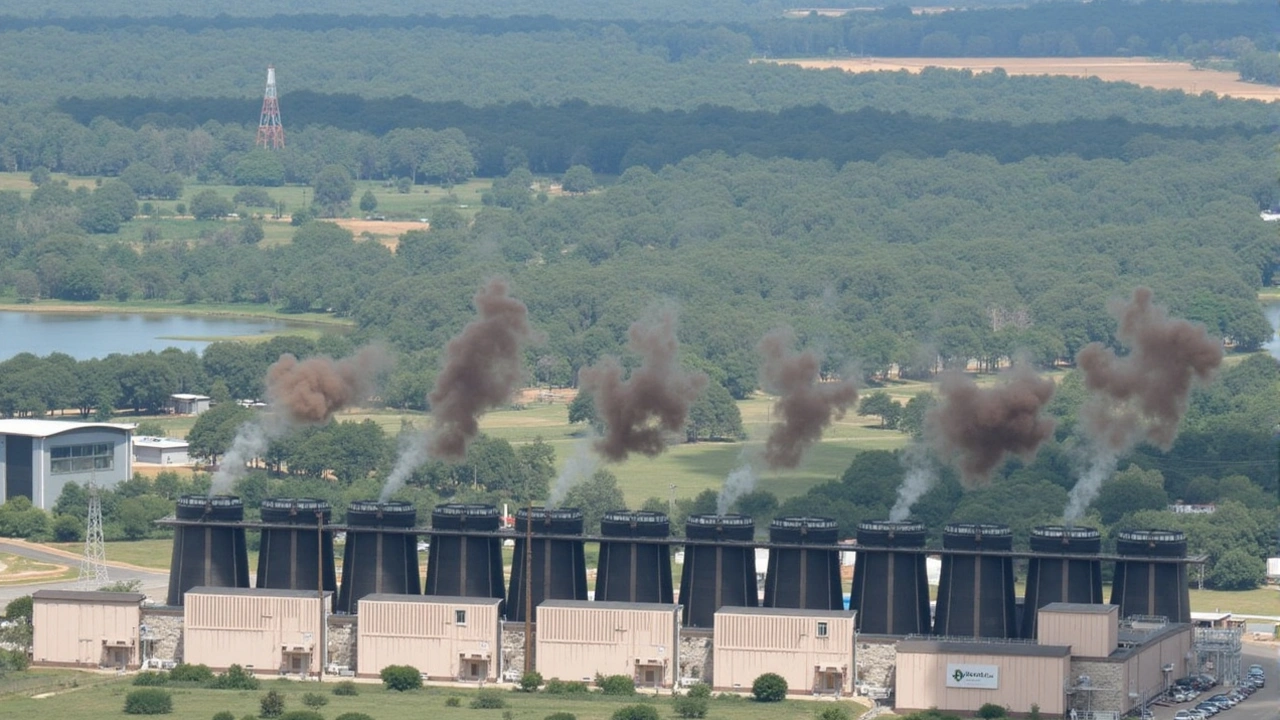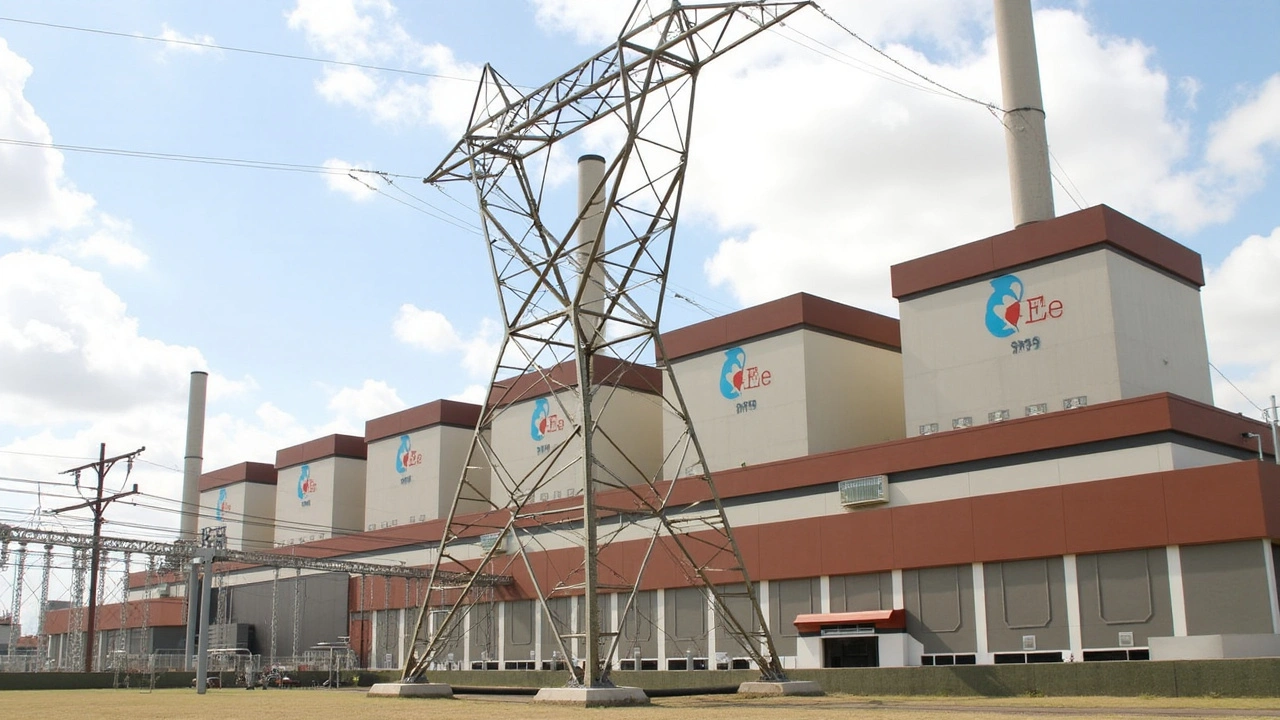Continuous Electricity Supply Faces Temporary Disruption
For nearly a year, South Africans have enjoyed uninterrupted electricity, a welcome respite from the load-shedding woes that have plagued the nation for so long. This uninterrupted supply appeared to herald a new era, predominantly driven by Eskom's commitment to improving the generation fleet's reliability. However, a recent announcement from Eskom has cast a shadow of uncertainty over this period of stability. The utility giant has warned of a high probability of load-shedding, potentially reaching Stage 4, particularly during the upcoming weekend.
Eskom's Group Chief Executive Dan Marokane conveyed the somber news, emphasizing that this development stems from a series of unforeseen breakdowns at several critical power stations. These breakdowns have emerged over the past week, significantly impacting the operational capacity of the stations. As a result, extended repair times are necessary, straining Eskom's already tight resources. This situation necessitates the generous use of emergency reserves, which are now critically low and in dire need of replenishment.
Stage 4 load-shedding could mean up to 4,000 megawatts of power being cut from the national grid, affecting households and businesses across the country. The decision to move to such an advanced stage of load-shedding is not made lightly and reflects the severity of the current situation. With emergency reserves depleted, the risks of not imposing further restrictions could result in widespread and prolonged blackouts, causing more significant disruptions than the load-shedding itself.
The Underlying Causes of Power Station Strain
Understanding the reasons for these breakdowns requires delving into the complexities of power station maintenance and operations. Power stations, especially those relying on older technology or poorly maintained infrastructure, are inherently susceptible to wear and tear. This vulnerability is compounded by the pressure to maintain continuous operation, which subsequently upscales the risk of equipment failure.
Over the past several years, Eskom has poured substantial resources into upgrading and maintaining its energy generation facilities. However, the recent spate of breakdowns indicates that challenges persist. These are not merely technical challenges—they hint at systemic issues related to maintenance processes, procurement policies, and resource allocation that have long troubled the utility company.
Former strategies implemented to strengthen Eskom's operational efficiency may have alleviated some problems temporarily, but recent developments underscore the necessity for profound and sustained reforms. It is crucial for Eskom to address the root causes of these outages rather than merely managing them as isolated incidents.

Replenishing Crucial Emergency Reserves
The emergency reserves, a critical component of Eskom's electricity supply strategy, serve as a buffer to prevent disruption when unexpected events occur. These reserves include diesel and water for open-cycle gas turbines and pumped storage schemes, which are pivotal in mitigating shortages during peak demand periods.
Replenishing these reserves is an urgent priority for Eskom, especially given their limited availability. The depletion of such reserves poses an immediate risk, and restoring them is not simply a matter of financial expenditure but also logistical capability and time. Eskom's expedited measures for reserve replenishment will involve rigorous logistical planning and cooperation with suppliers to ensure that shortages do not extend beyond current predictions.
Load-Shedding: A Fractured Solution?
While load-shedding is ostensibly a preventative measure to maintain grid stability, it is a contentious and unpopular solution among the public. It has broader implications for the economy, affecting everything from manufacturing capacity to the day-to-day operations of small businesses, not to mention the discomfort and inconvenience it causes to millions of households.
Moreover, recurring load-shedding messages can erode public confidence in Eskom's ability to effectively manage the national grid. Despite previous promises and assurances, any reoccurrence of load-shedding seems to perpetuate a narrative that long-term energy security remains elusive. The public, understandably, yearns for a more reliable solution that addresses the perennial energy crisis head-on.

Eskom's Communication and Future Plans
Eskom has committed to being transparent about the status of the country's power generation capabilities. Dan Marokane, the Group Chief Executive, has pledged to keep the public informed through regular updates, aiming to manage expectations and prepare the public for potential disruptions.
In line with this commitment, Eskom is also looking to future enhancements in its operational capacity. These enhancements are expected to focus not only on physical infrastructure but also on improving efficiency through technological innovation and optimized resource management. Such initiatives are deemed essential in transforming Eskom into the reliable electricity provider the country desperately needs.
While the potential for Stage 4 load-shedding looms, it is vital for both Eskom and its stakeholders to channel efforts towards sustainable solutions. This involves not only improving technical processes and infrastructure but also fostering a culture focused on proactive problem-solving and accountability. As Eskom navigates this critical period, it is hoped that lessons learned will solidify the foundations for a future where energy stability is the norm, not an exception.